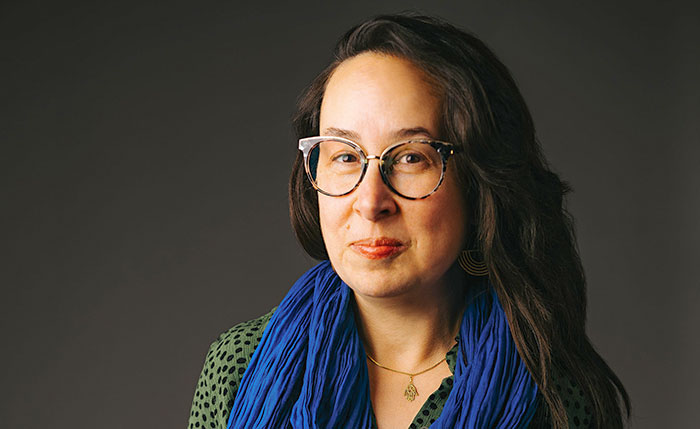Competition and weather help motivate CMS lacrosse team
For the players and coaches of the Claremont-Mudd-Scripps women’s lacrosse team, the program combines 2 things they love: a fast-paced game requiring focus and finesse, and idyllic weather.
“That’s half the reason a lot of us came here,” said Scripps freshman Becky Gold. “What’s better than playing lacrosse in the sun?”
Monday, April 16, found the CMS team practicing against a backdrop of blue skies and a snow-covered Mt. Baldy. If assistant coach Gabrielle Dewey were still in upstate New York, the snow would be more than a distant vision.
“We’d be in the snow, shoveling it,” she said. “We always say it’s so much better to play here than in New York.”
That “we” includes head coach Heather Semelmacher, who traded her post at SUNY New Paltz for the Claremont Colleges. She brought Ms. Dewey, one of her most promising student athletes, along to assist with the job. After leading her Onondaga Community College team to the 2009 championships of the National Junior College Athletic Association, Ms. Dewey started 15 games with the SUNY New Paltz Hawks.
It is fitting the 2 coaches are East Coast transplants, given lacrosse’s slow but steady westward journey in recent years.
Lacrosse has long history
The game—of Native American origin—was adopted by European settlers in what is now Canada before making its way south.
The first US team, The Mohawk Lacrosse Club, was formed in Troy, New York in 1868. The game’s popularity has grown to the point where many kids start lacrosse around the same time they start school, like children in California do with soccer and baseball.
From the start, girls and young women have been among the most avid lacrosse players. Women embraced the game even when sports were largely relegated to men. Some attribute this to a comment made by Queen Victoria. When she traveled to a Canadian exhibition game in 1876, the straight-laced regent was heard to say, “The game is very pretty to watch.”
It may be pretty, but Ms. Dewey says lacrosse (particularly as it’s played in the east coast, with plenty of “roughing”) is not for the faint of heart.
Anthea Weixel, a sophomore from Rhode Island, can attest to this. While matches usually only yield bruises, Ms. Weixel had her arm broken at the beginning of the season.
Ms. Weixel is undeterred. She loves playing the sport at the Claremont Colleges, and looks forward to hitting the field next season after her arm heals.
“You’ve got the ability to play and balance academics that doesn’t happen at Division 1 schools. It’s a lot of fun every day.”
Though the CMS team may not be in Division 1, Coach Semelmacher is ambitious. Asked what her hopes are for the Athenas, she is unequivocal: “To win a national championship.”
Getting there will take a bit of doing. To qualify for NCAA competition, the Southern California Intercollegiate Athletic Conference needs to grow so Claremont can play more league games.
The level of play on the team also needs to improve, said Ms. Semelmacher. “We need to get a larger team, a bigger roster, and just challenge ourselves.
Next year, Chapman University will join the ranks of CMS’s current roster of regular opponents. The other teams include cross-campus rivals Pomona-Pitzer, Occidental College, the University of Redlands and Whittier College.
Netting results
The women of the CMS lacrosse team show obvious delight as they take to the field with a can-do attitude, a pair of cleats and a long-handled lacrosse stick strung with loose mesh.
The aim of the game, which calls for 12 players, is quite simple. Score by shooting the ball into the opponents’ goal and keep opponents from reaching your goal.
The game’s clarity doesn’t keep the 20 members of the CMS lacrosse team from having to explain the sport to puzzled neophytes.
“My family only knows about lacrosse because of me,” said Claremont McKenna College senior Christina Khavarian, who hails from San Diego.
“We explain it by saying it’s like field hockey, but you hold your stick above your shoulders instead of below,” added senior Lucy Phillips, an international relations major.
Ms. Phillips loves the game for its precision. “It’s more about finesse and technique than power.”
For Ms. Dewey, the rush comes from those Zen-like moments when the team gets in a groove and scores.
“It’s a good feeling, those times when your passes connect and you get a good shot,” she said.
Good feelings are optional when it comes to conditioning, about which Ms. Semelmacher is notoriously zealous. Members of the CMS lacrosse team have 6 a.m. practices during the preparatory fall ball period. Once the season starts in earnest, they have 7 a.m. conditioning and practice 6 days a week.
As a midfielder, Ms. Khaverian can run up to 6 miles in the course of a game. Nonetheless, she was initially daunted by Coach Semelmacher’s emphasis on rigorous sprints as well as weight lifting.
“I definitely had a moment where I was like, ‘Oh, my God, what did I get myself into?” she said.
The furious conditioning, practicing and nicks and bruises from competition can take a toll, said CMC senior Ali Abramovitz. “I’m an old woman after each season. I have to take a couple weeks off.”
While season play is over, Ms. Abramovitz and team won’t be recuperating quite yet. After losing their last game on Wednesday, April 18 against Occidental College (15-3), the team heads for the SCIAC tournament. If they play well enough, the Athenas, 8-6 overall, can nab the conference championship.
Like the sport itself, the tournament is likely to be hard work and a lot of fun.
“There’s any type of girl you can think of on the team. Off the field, we’re very different,” said Tess Hubbling, a CMC freshman. “Once we’re on the field, we’re very good friends and we really come together as a team.”
—Sarah Torribio










0 Comments